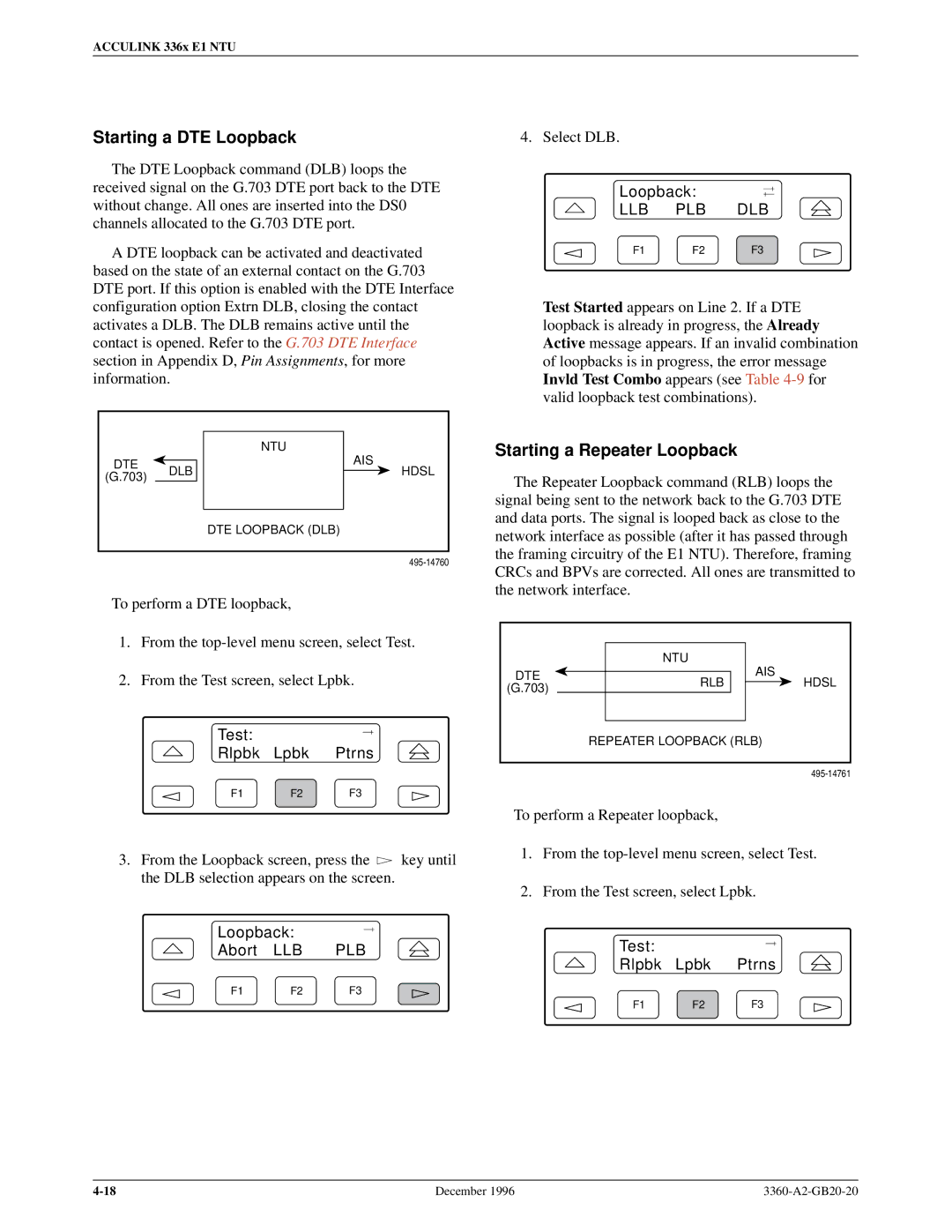
ACCULINK 336x E1 NTU
Starting a DTE Loopback
The DTE Loopback command (DLB) loops the received signal on the G.703 DTE port back to the DTE without change. All ones are inserted into the DS0 channels allocated to the G.703 DTE port.
A DTE loopback can be activated and deactivated based on the state of an external contact on the G.703 DTE port. If this option is enabled with the DTE Interface configuration option Extrn DLB, closing the contact activates a DLB. The DLB remains active until the contact is opened. Refer to the G.703 DTE Interface section in Appendix D, Pin Assignments, for more information.
|
|
|
| NTU | AIS |
DTE |
|
|
|
| |
| DLB |
|
| HDSL | |
(G.703) |
|
|
| ||
|
|
|
|
|
|
DTE LOOPBACK (DLB)
To perform a DTE loopback,
1.From the
2.From the Test screen, select Lpbk.
Test: |
|
|
Rlpbk | Lpbk | Ptrns |
F1 | F2 | F3 |
3.From the Loopback screen, press the ![]() key until the DLB selection appears on the screen.
key until the DLB selection appears on the screen.
Loopback:
Abort LLB PLB
F1 F2 F3
4. Select DLB.
Loopback:
LLB PLB DLB
F1 F2 F3
Test Started appears on Line 2. If a DTE loopback is already in progress, the Already Active message appears. If an invalid combination of loopbacks is in progress, the error message Invld Test Combo appears (see Table
Starting a Repeater Loopback
The Repeater Loopback command (RLB) loops the signal being sent to the network back to the G.703 DTE and data ports. The signal is looped back as close to the network interface as possible (after it has passed through the framing circuitry of the E1 NTU). Therefore, framing CRCs and BPVs are corrected. All ones are transmitted to the network interface.
|
|
| NTU | AIS | |
|
|
|
|
| |
DTE | RLB |
| HDSL | ||
(G.703) |
|
|
| ||
|
|
|
|
|
|
REPEATER LOOPBACK (RLB)
To perform a Repeater loopback,
1.From the
2.From the Test screen, select Lpbk.
Test:
Rlpbk Lpbk Ptrns
F1 F2 F3
December 1996 |
